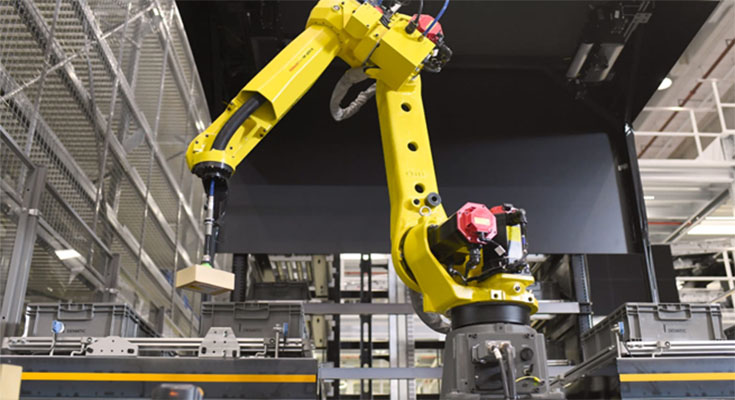In today’s fast-paced world, industries are constantly seeking innovative ways to increase productivity and efficiency. One such technology that has revolutionized the way businesses operate is the industrial robotic arm. These versatile and highly precise robotic systems are transforming various sectors, ranging from manufacturing to healthcare. In this blog post, we will explore the potential of robotic systems and how different industries can leverage their benefits to boost productivity and streamline operations.
By Enhancing Manufacturing Processes
Industrial robotic arms have played a pivotal role in transforming the manufacturing industry. These robotic systems have the ability to perform repetitive and precise tasks with remarkable speed and accuracy. By automating assembly lines and carrying out intricate tasks such as welding, painting, and packaging, robotic arms have significantly improved production efficiency. This has not only reduced human error but also increased output, resulting in faster turnaround times and higher quality products.
By Revolutionizing Healthcare
The healthcare sector has also witnessed the remarkable impact of robotic systems. Industrial robots are now being used to assist surgeons in performing complex procedures with enhanced precision. With their steady hands and precise movements, robotic arms can carry out delicate surgeries, resulting in reduced complications and faster recovery times for patients. Moreover, these robotic systems can handle repetitive tasks such as medication dispensing and patient lifting, allowing healthcare professionals to focus more on critical and personalized care.
By Streamlining Logistics and Warehousing
Robotic systems have proved invaluable in optimizing logistics and warehousing operations. Industrial robotic arms can automate repetitive tasks involved in the movement, sorting, and packaging of goods. They can efficiently handle heavy loads, navigate complex warehouse layouts, and ensure accurate inventory management. By leveraging these robotic systems, businesses can achieve faster order fulfillment, reduced errors, and enhanced supply chain efficiency, leading to improved customer satisfaction.
By Advancing Agriculture and Farming
The agricultural industry is embracing the potential of robotic systems to revolutionize farming practices. Robotic arms equipped with advanced sensors and computer vision technology can perform tasks such as seeding, spraying, and harvesting crops with precision and efficiency. These robotic systems can also monitor plant health, analyze soil conditions, and optimize resource utilization, leading to increased crop yields and reduced environmental impact. By harnessing the power of industrial robots, farmers can transform traditional farming methods into highly automated and data-driven processes.
By Improving Safety in Hazardous Environments
Robotic systems have proven to be a game-changer in industries that involve hazardous or high-risk work environments. Industrial robotic arms can be deployed in environments such as nuclear power plants, oil refineries, and mining sites, where human safety is a primary concern. These robotic systems can handle tasks that are dangerous for humans, such as handling toxic substances, working in extreme temperatures, or performing tasks in confined spaces. By leveraging robotic technology, businesses can ensure the safety of their workers while maintaining productivity and operational efficiency.
Conclusion
The future of productivity lies in the widespread adoption of robotic systems across various industries. The industrial robotic arm, with its precision, speed, and versatility, has emerged as a transformative technology. By leveraging these robotic systems, businesses can enhance manufacturing processes, revolutionize healthcare, streamline logistics and warehousing, advance agriculture, and improve safety in hazardous environments. Embracing the potential of robotic systems will not only boost productivity but also pave the way for innovation, efficiency, and sustainable growth in the years to come.





